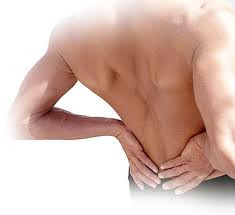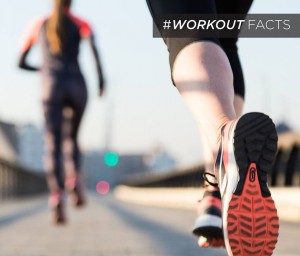Chronic low back pain often results from a weakness in the muscles supporting your back which may lead to instability or incorrect functioning of the lower part of the spine (lumbar spine). Strengthening the muscles responsible for providing support to the spine is therefore very important. You need to remember to strengthen your stomach muscles as well as your back muscles so that your spine is equally supported at both the front and the back. Loss of stability in your spine can lead to microscopic damage to the surrounding soft tissues so it is particularly important to address this problem quickly to minimize damage.

When injured it is important that you warm up with a fast walk for 3-4 minutes before you start your exercises. This increases your circulation and helps prepare your muscles for the activity to come. When you have finished your exercises it is also important to allow your heart rate to slow down gradually by ending the session with gentle walk for 3-4 minutes.
You can actively manage your back by:
- Remaining active in all setting (at home, at work, in the community, at leisure)
- Keeping mobile – keeping fit.
- Making an early return to normal activities, following an acute attack of low back pain, then gradually and progressively returning to regular physical activity.
- Staying at work – bed rest is not effective.
- modifying your activities and environment.
- Using extra physical support ( eg. cushions, wear flatter shoes).
- Maintaining la good posture at all times.
- Using your thighs to bend and lift and not your back.
Adaptations for active daily living
Try and avoid sitting for a long time ( maximum 15mins)– give yourself a reason to get up and move around or stretch. Keep the phone or remote control away lfrom you, get up to put washing in the machine. Notice and then act when you feel stiff, perform regular ‘release /relief ‘ stretches.
If you are sitting in a poorly supported chair – place a cushion, or a rolled towel or bag ( if you are caught out in a restaurant) in the ‘small’ of your back where it helps to maintain normal curvature of the spine and prevent slumping. Try turning a chair around backwards and straddling the seat. the back of the chair will support the trunk.
When hoovering – use a vacuum that is not heavy and which has height – adjustable handle. Keep the handle close to your stomach, keep upright and keep moving your feet to avoid stooping. To clean under tables or chairs, bend at your hips and knees or if your knees permit, kneel on one knee keeping your body upright.
If you clean your teeth at a low basin – to avoid stooping move your feet wider apart to lower your trunk. Place one hand on the sink for support if necessary and bend at the hips keeping a straight back or raise one foot on to a ledge (if there is one), or try kneeling using the sink for support or sitting down. Alternative
